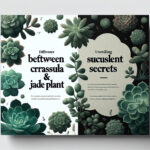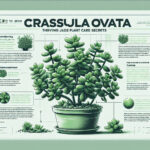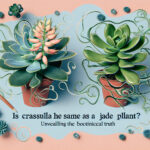Introduction to Crassula Plants and Jade Plants
If you’ve ever wandered through a garden center or leafed through a houseplant book, you’ve likely gazed upon the sleek, glossy leaves of the jade plant. This sturdy succulent often graces windowsills and office desks alike, but did you know it has a botanical twin—the Crassula? Yes, “is Crassula and jade plant same?” is a question on the minds of many plant lovers. On the surface, they may seem like doppelgangers; however, the waters of their identity are as murky as a rain-soaked garden path. Let’s dig a little deeper and explore the botanical connection that’s been causing quite the mix-up among green thumbs!
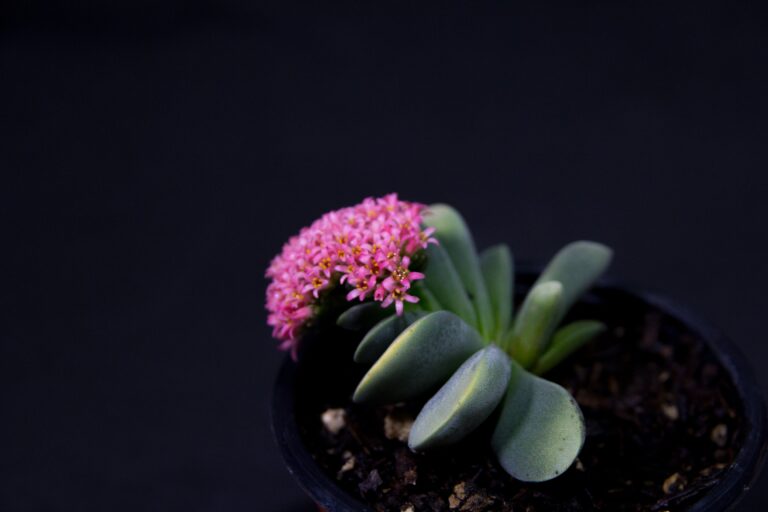
Imagine you are at your friend’s house, admiring a collection of succulents. You point to a plump, green plant and proclaim, “That’s a lovely Crassula you’ve got there!” Your friend, a self-proclaimed plant expert, corrects you— “That’s not a Crassula; it’s a Jade Plant.” Now you’re puzzled, second-guessing your own plant-identifying abilities. It’s a common scene, and the confusion stems from the fact that Jade Plant is a nickname most commonly associated with Crassula ovata, which is indeed a member of the Crassula genus.
In botanical terms, it’s a bit like siblings—Crassula is the family name, housing not just one, but a whole variety of succulent species. The famous Jade Plant, or as botanists would call it, Crassula ovata, is just one of the many species in the Crassula family. There are other Crassula plants out there that sport different looks, much like brothers and sisters who share traits yet display their own unique features. So, while every Crassula ovata can be called a Jade Plant, not every Crassula earning the family name can claim the title of Jade Plant. Confusing, isn’t it?
Now, let’s get hands-on, if you were to walk through a nursery lined with Crassula species, you’d notice a parade of diversity: some with leaves round and squat like pebbles, others stretched into elongated teardrops. Their colors can be as simple as green or as flamboyant as variegated yellows and pinks. The Jade Plant, with its iconic tree-like structure and oval leaves, stands tall amid its relatives, asserting its popularity but not its exclusivity.
To wrap our roots around this topic, think about the Jade Plant as the celebrated figure in a large family reunion photo—it’s easy to spot and often the center of attention. Yet peek around, and you’ll see a spectrum of Crassula relatives, each with its charm and character. Our botanical journey, akin to a family tree exploration, is filled with surprising kinships and identity revelations—leaving us with a newfound appreciation for the variety within the Crassula lineage.
Taxonomy: Understanding the Plant Kingdom
Imagine you’re at a family reunion. You’ve got cousins, second cousins, and those relatives who are some sort of ‘removed.’ Now, transpose that idea onto the lush green world of plants, and you have what we call taxonomy – the science of classifying living things, which helps us understand their relationships, like a family tree!
Let’s dig into the verdant lineage of the Crassula and where the renowned Jade Plant fits into this botanical hierarchy. The Crassula genus is like a big family name, housing a plethora of succulent species under its broad leaves. If you’ve ever marveled at the plump foliage of a Jade Plant, you’ve been admiring one of the superstar members of this botanical clan!
But what makes a Jade Plant a ‘Jade Plant,’ and how can we distinguish it from its many succulent cousins? Think of it as a combination of genetic markers – leaf shapes, blooming habits, and survival tactics – that align just so, to grant it a space within the Crassula family album. Each feature is a tick on its taxonomic checklist that confirms its membership in this green dynasty.
Just like people, plants can be traced back to their roots – thus, the Jade Plant can trace its heritage back to the Crassula genus. But not all Crassulas are Jades; that’s where taxonomy helps gardeners and botanists alike. By sifting through the characteristics, they uncover the subtle yet significant differences that determine which plant is which.
Remember, next time you wander through a garden center or gaze at a windowsill collection of succulents, you’re not just looking at plants. You’re peering into a family saga that spans generations, with each leafy creature playing a part in a much larger story. It’s the artful blend of science and nature that allows us to appreciate the intricate web of relationships among the wards of the plant kingdom.
Visual Characteristics: Spotting the Differences
Embark on a botanical journey as we dive into the lush, green world of Crassula and Jade Plants. At first glance, these succulent siblings might trick you into thinking they’re identical twins, but a keen eye reveals their distinct personalities. Picture walking through a verdant oasis, where every succulent tells its own story with unique foliage fashion lines. Let’s put on our plant detective hats and uncover the subtle yet fascinating differences in their leaf couture.
Imagine a palette of green, where Crassula plants offer up a kaleidoscope of shapes, sizes, and textures. Their leaves can range from silvery green to deep, glossy jade. Some may flaunt a powdery coating or fine hairs, while others keep it sleek and smooth. In the illuminated corner, spot the classic Jade Plant, with its signature plump, oval leaves, almost like nature’s plush cushions, inviting a touch.
The true divergence lies in the details; think of the Crassula’s leaves as tailored to perfection, crisp and firm with a diverse wardrobe—from the paddle-shaped Crassula ovata to the tubular elegance of Crassula rupestris. Each one nestles together in an exquisite rosette or proudly stands out in a starburst array. In contrast, the Jade Plant’s foliage is consistently robust and rounded, often resembling a cluster of emerald green balloons ready for a botanical celebration.
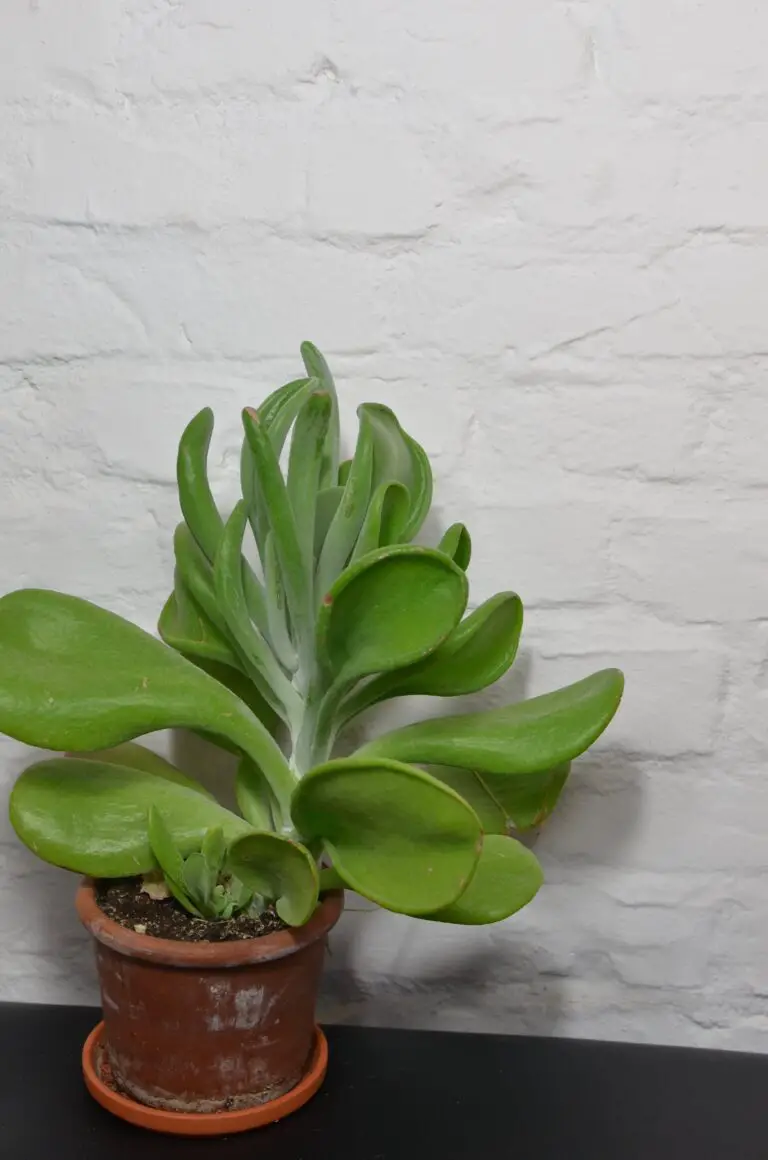
Should you be nurturing these green gems in your own sanctuary, you’ll note that Crassula’s sculptural beauty thrives with minimal pampering, while the Jade Plant’s cascading branches might ask for a bit more room to express their joyous leap towards the sun. Indeed, the savvy gardener knows that while both enjoy a siesta in the afternoon shade, their watering wishes vary ever so slightly.
For those with a penchant for botanic elegance and fuss-free foliage, you’ll find solace in a guide to nurturing your succulents to achieve the perfect harmony of light, water, and love. Whether you fancy the delicate charm of a Crassula or the stoic grace of a Jade Plant, these captivating succulents will transform your living tableau into an enchanting green tapestry.
Cultural Significance: The Story Behind the Names
When we delve into the realm of horticulture, each plant tells a narrative rooted in its leaves, etched in its stems, and encapsulated by its name. The Crassula, often known for its robust, luscious leaves, embodies this intrigue, while the term “Jade Plant” evokes images of precious stones and prosperity. In unraveling the history behind these botanical badges, we uncover tales as rich as the jade’s verdant hues, revealing why these names are not just markers but milestones in cultural history.
Envision a Crassula, perched on a windowsill, basking in the soft glow of the afternoon sun. This same sun has witnessed civilizations rise and fall, each assigning its own significance to the plant we now casually know as the “Money Tree.” In its native soils of South Africa, the Crassula holds a place of reverence, a living ode to the fecund earth, while oceans away, in the bustle of Asian markets, it stands as an emerald emblem of fortune, inviting wealth with its outstretched arms.
The legacy of the Crassula groups a constellation of cultivars, its alias ‘Jade Plant’ among the most brilliant stars. Yet despite their shared heritage, these twin-like terms can mislead the green-thumbed aficionados. Calling a Crassula a “Jade” is akin to mix-ups in botanical nomenclature’s tapestry, where similar traits often lead to a melding of myths and identities.
Dive deeper, and you’ll find that every Jade Plant has a story, a snippet of folklore, a breath of superstition. It has voyaged through time, hitching a ride on the waves of migration, commerce, and culture, emerging with a moniker that masks its true lineage. The whimsy of popular names often overlooks the scientific stripes, leading to delightful, yet potentially bewildering, botanical cross-identifications.
Suffice it to say, the tale of the Crassula and the Jade plant is one steeped in lush layers of human history and plant biology. A tale where the collective memory of generations adorns these “Botanical Twins” with veils of value, mysticism, and charms far beyond their native lands.
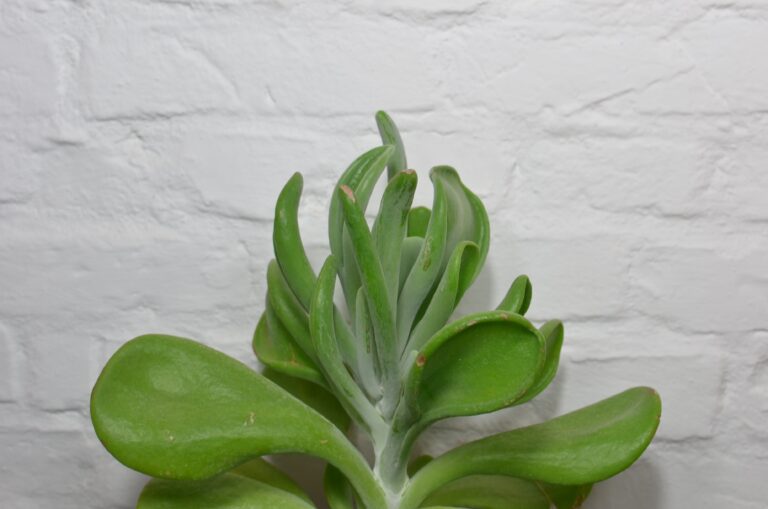
Growth and Care: Cultivating Your Green Thumb
Whether they’re botanic buddies or not, both Crassula and Jade Plants enliven your home with a splash of verdant vitality. But here’s the scoop fellow green thumbs: keeping these leafy lovelies thriving is about understanding their idiosyncrasies as much as their similarities. So, let’s dive into the verdant world of Crassula and Jade Plant care, and turn your thumbs the greenest of hues!
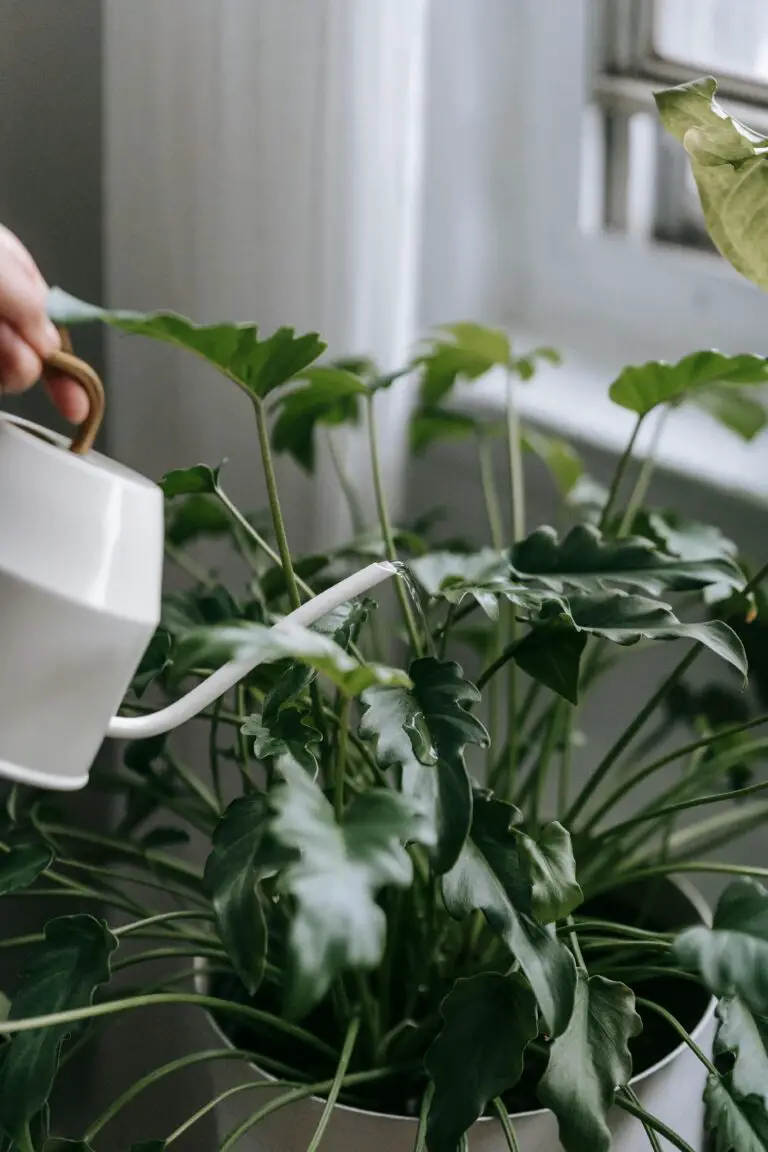
Imagine you’ve just brought home twin plant infants, both begging for your nurturing touch. You’re keen to raise them to be the suburban yard’s envy or the city balcony’s spectacle. The Crassula, often mistaken for the Jade Plant, or vice versa, needs a homely spot with generous light but not the harsh afternoon sun. Remember that cozy corner where you love to read? They’ll relish it just as much!
Watering Wisdom for Well-Being
Water is the essence of life, but remember, your Crassula and Jade Plants are not thirsty for a flood. Picture a desert after a light rain — that’s what their roots yearn for. So, a moderate watering regimen, allowing the soil to dry out between showers, mimics their native habitat’s conditions. Overdo it, and you may just drown their desert dreams.
Feeding Finesse: A Balanced Diet for Botanical Belles
Just as you savor a well-rounded diet, these botanical belles crave the same. A balanced fertilizer, lean on nitrogen but hearty in phosphorus and potassium, will ensure robust growth without turning them into ungainly green giants. Spring and summer are their ‘feast seasons,’ while autumn and winter call for a gentle nourishing touch, echoing the seasons of their natural growth.
To sum it up, bestowing upon your Crassula and Jade Plant the right amount of light, water, and nutrients, while recognizing their subtle differences, is akin to a balancing act worthy of a seasoned horticulturist. With these insights, you’re on track to mastering the dual art of Crassula and Jade Plant care. Let’s turn those thumbs green and become plant-parenting pros!
Popular Varieties and Their Unique Traits
While the Crassula genus boasts an impressive array of succulents, let’s turn the spotlight on some show-stealing varieties that are often confused with the classic Jade Plant, Crassula ovata. These botanical twins share a family tree but branch out into distinct personalities within your garden or living space.
First up is the silver-sheened ‘Blue Bird’ variety, whose glaucous leaves create a serene tableau against the backdrop of your bustling office. Next, meet the ‘Gollum’, a character straight out of a fantasy novel with tubular leaves that whisper secrets from its corner in your study. The ‘Hobbit’ variety emerges with curled leaves resembling small green fingers, beckoning admirers closer—perfect for softening the lines of modern, minimalist decor.
And let’s not forget the ‘Sunset’, which bathes your room in warm undertones as its leaves blaze with shades of yellow and red, akin to a fiery sky at dusk. Each one of these Crassula cultivars will bestow its unique energy upon your space, making it not just a place to live, but a place to thrive.
Of course, thriving is their middle name, but to keep these succulents at their peak, be sure to check out our guide on Crassula Plant Care Mastery: Flourishing Succulents Within Reach. Just as each plant enlivens your environment with its own flair, they also have their individual cravings for sunlight, water, and nutrients.
Mingling these Crassula varieties with the iconic, emerald-hued Jade Plant creates a tapestry of texture and color that is purely enchanting. Whether it’s the robust charm of the Jade Plant or the delicate dance of the ‘Hobbit’s’ leaves in the breeze, each variety invites you to not just observe, but to engage with the natural world.
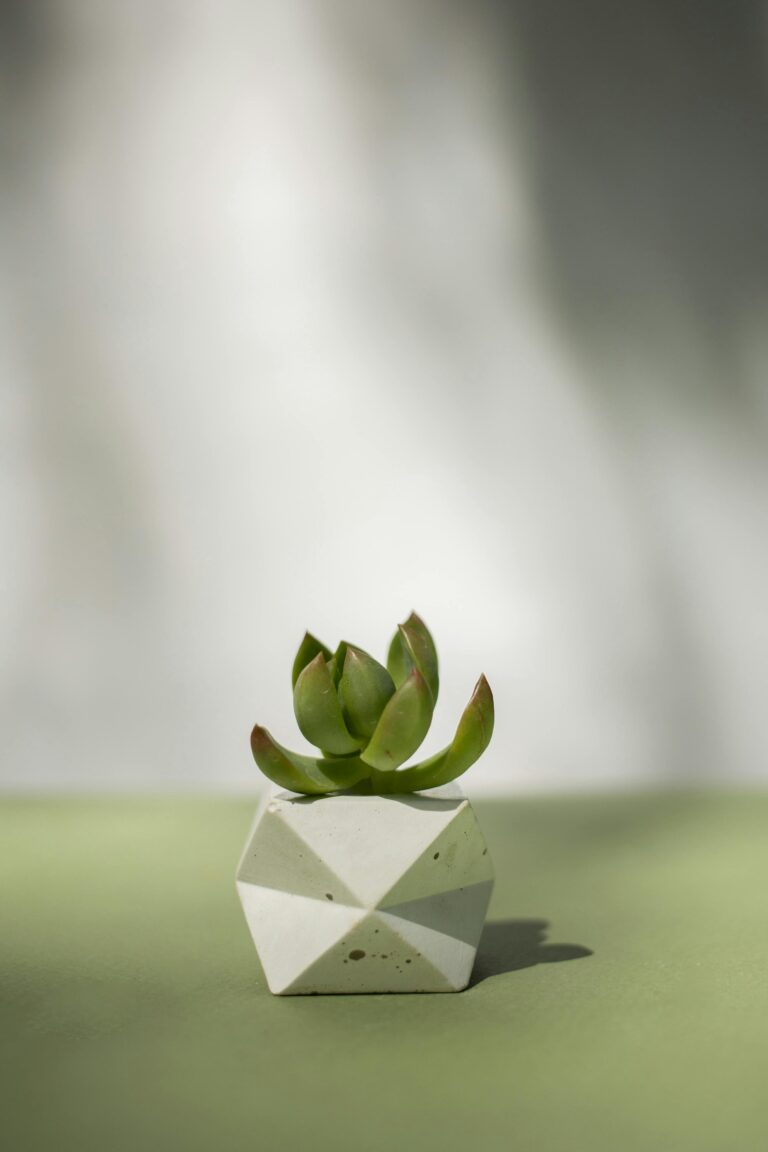
Succulent Landscapes: Integrating Crassula and Jade
When it comes to landscaping, few plants offer the versatility and visual appeal of the resilient Crassula and the charming Jade plant. Often mistaken for each other, these botanical twins each boast a unique beauty that can elevate any garden space. But how exactly can you harness their full potential in your succulent landscape or indoor garden? Let’s dive in.
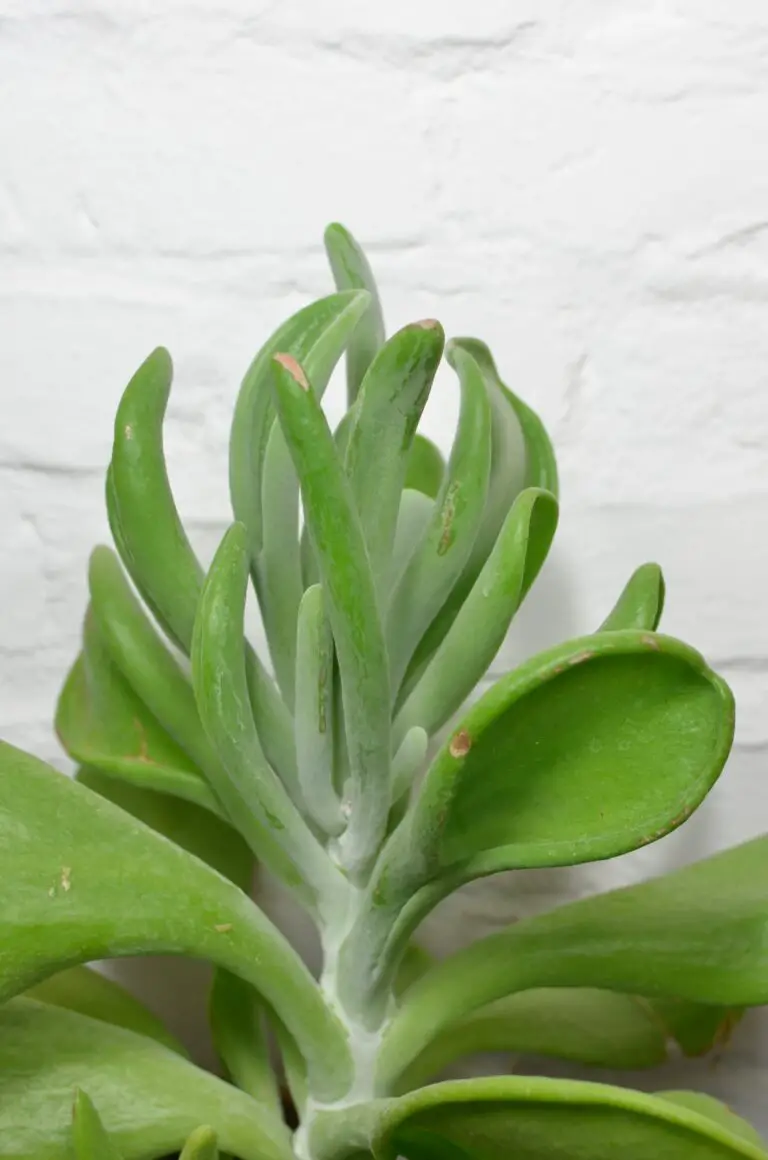
Designing with Durability and Style
The real magic happens when these succulents mingle harmoniously in your space. Think of a Crassula ovata, with its woody stems and plump, glossy leaves, as a focal point in your rockery. Nearby, a group of Jade plants can soften the hard edges of stones with their thick, luscious leaves. Their contrasting textures and forms are a landscape designer’s dream, providing a year-round spectacle of greenery that’s both sturdy and stylish.
Dreaming of an eye-catching centerpiece? Consider a large Crassula as an anchor in a mixed succulent bowl, surrounded by cascading Jades that spill over the edges like a green waterfall. The robust nature of Crassula makes it a reliable backbone for such displays, while the subtle and elegant curves of Jade plants add movement and grace.
Easy Care, Maximum Impact
One of the greatest perks of Crassula and Jade plants is their low-maintenance nature. These succulents demand minimal attention, making them perfect not just for seasoned gardeners but for those new to the world of plants. Whether you have a busy lifestyle or a forgetful watering hand, these plants are forgiving and adaptable. For more detailed care instructions, visit our resource on succulent care tips, guaranteed to help you keep your Crassulas and Jades thriving.
Integrating Crassula and Jade plants into your landscape isn’t simply about aesthetics. These succulents are proven to survive in challenging conditions, where their water-storing capacities come into play. A sustainable choice, they’re ideal for water-wise gardens, cutting down on resources without compromising on beauty.
Utilizing these plants in both outdoor and indoor environments comes down to your creativity. Pair them with natural stone, mix them with various succulents, or place them in geometric terrariums for a modern twist. Remember, whether it’s a tranquil corner of your own sanctuary or a central feature in your outdoor landscape, Crassula and Jade plants offer endless possibilities to bring life to the space.
Purchasing Tips: Selecting the Right Plant
Embarking on the exciting journey to add either a Crassula or a Jade Plant to your green family? Fantastic choice! But beware, fellow green thumbs: not all succulents are created equal. You’re about to get schooled on the art of selecting the perfect botanical companion. Let’s dig in!
First things first, when you’re out hunting for your new leafy friend, remember: appearances can be deceiving. But fear not! With these tips, you’ll be dodging those common buyer blunders like a gardening ninja. Start with the foliage—it should be plump and vibrant, much like the ideal bank account. If the leaves are wilier than a dehydrated cactus, move on.
Time for a little touchy-feely! Gently squeeze the leaves. They should have the firmness of a ripe avocado. Too soft and your plant may have overindulged on water, while leaves harder than a week-old baguette are crying for moisture.
The Root of the Matter
Eyes downward, my friends, to the base of the plant where the real story unfolds. Roots peeking out of the drainage holes are throwing you a red flag; they’re desperately searching for new real estate. A root-bound plant is as cramped as a sardine in a tin and needs repotting post haste. However, roots shy of making an appearance aren’t great news either—they might signal an overly spacious pot that could lead to waterlogging.
Now, let’s not sidestep the pest patrol. Be on high alert for uninvited guests. You wouldn’t want freeloaders like aphids or mealybugs crashing your plant party, right? Inspect under the leaves and along the stems. If you spot anything scuttling or see sticky residue, it’s time to call in the bug busters.
Real-life Plant Tales
Consider Amy, a savvy plant shopper, who once brought home what she thought was a robust Jade Plant. Little did she know, it was a Crassula in disguise, sneakier than a chameleon in a kaleidoscope. She learned that checking the plant label is as crucial as reading the fine print on a contract. Ah, the plot thickens in the world of succulents!
Then there’s Bob, who, eager to impress with a touch of exotic greenery, picked the most ‘unique’ looking plant. However, uniqueness came with a side of scale insects. Guess who spent the following weeks playing exterminator? Spoiler: it wasn’t his cat.
Here’s a visual guide to assist you on your horticultural quest. Watch and learn how to select and care for the right Crassula or Jade Plant:
Armed with these pro tips, you’re now ready to snag the ideal Crassula or Jade Plant, ensuring your indoor oasis thrives. So, green team, get out there—your perfect succulent sidekick awaits!
FAQ: Your Questions Answered
Ever walked into a friend’s living room, spotted a luscious green plant with plump leaves sitting on the coffee table, and exclaimed, “What a beautiful Jade Plant!” only to be met with, “Actually, it’s a Crassula?” If you’ve puzzled over whether these are two names for the same charming succulent or distinct botanical kin, you’re not alone! This section digs into the soil of this common query, rooting out the facts with a touch of green-thumbed wit.
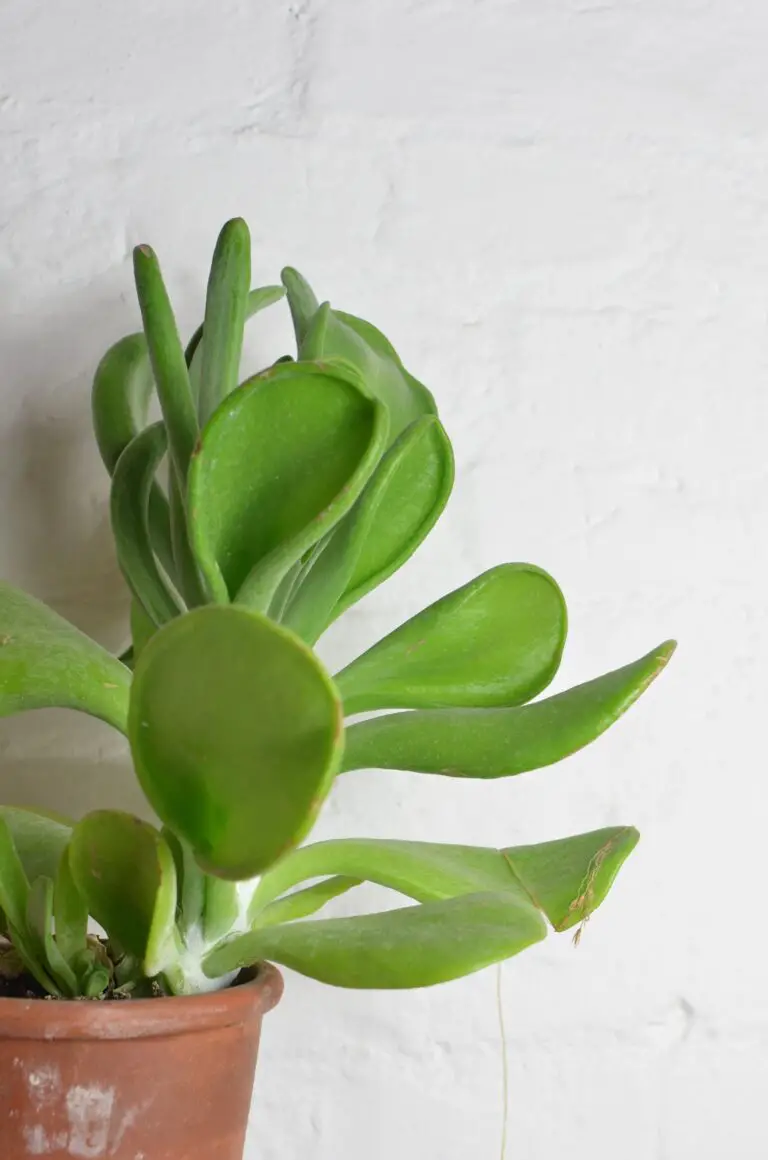
Are Crassula and Jade Plant botanical doppelgangers?
Imagine you’re at a plant nursery, and you overhear a shopper asking for a Jade Plant. “Ah, you mean a Crassula ovata!” the knowledgeable clerk responds. That’s your eureka moment – Crassula ovata is indeed the scientific nomenclature for what’s commonly called the Jade Plant or Money Tree. Known for their glossy, coin-shaped leaves that seem to store liquid sunshine, both Crassula and Jade Plants are, in essence, the same delightful succulent that’s stolen the hearts of indoor gardeners worldwide.
Why the mix-up, then?
It’s like every family has twins, and in the botanical world, Crassula and Jade are it. These leafy siblings can cause quite the stir, leading to mix-ups. The reason is that Crassula is a genus of plants that encompasses many species, including the star of our show, Crassula ovata. So when someone speaks of Crassula in general terms, they might be referring to an entire family of plants. But mention Jade Plant, and you’ve zoomed in on a specific, widely-known member of that plant clan.
Can I tell them apart in a crowd?
Suppose you’re amidst an array of succulents at your local garden center, hunting for the perfect Crassula or Jade Plant. The Crassula ovata, our botanical celebrity, will likely vogue with its woody stems and oval leaves that may blush red at the edges when kissed by the sun. Yet, suppose you encounter another Crassula species, like the Crassula arborescens. In that case, you’ll notice subtle differences, such as leaves that may be rounder or possess silver sheens. Your mission: seek out the specific traits of Crassula ovata to ensure you’re not just getting any Crassula but the one that’s the belle of the botanical ball!
Jade Plants in the wild – are they the same as my living room star?
Let’s trek to the rugged landscapes of South Africa, where Jade Plants spring from the earth, basking in their natural habitat. The wild Crassula ovata shares its DNA with your domesticated darlings, steadfast in the face of dry, rocky terrains. This enduring spirit is why Jade Plants are symbols of growth, renewal, and prosperity – traits that echo in every corner of the globe, whether in a pot perch on your window sill or in the untamed wilderness.
